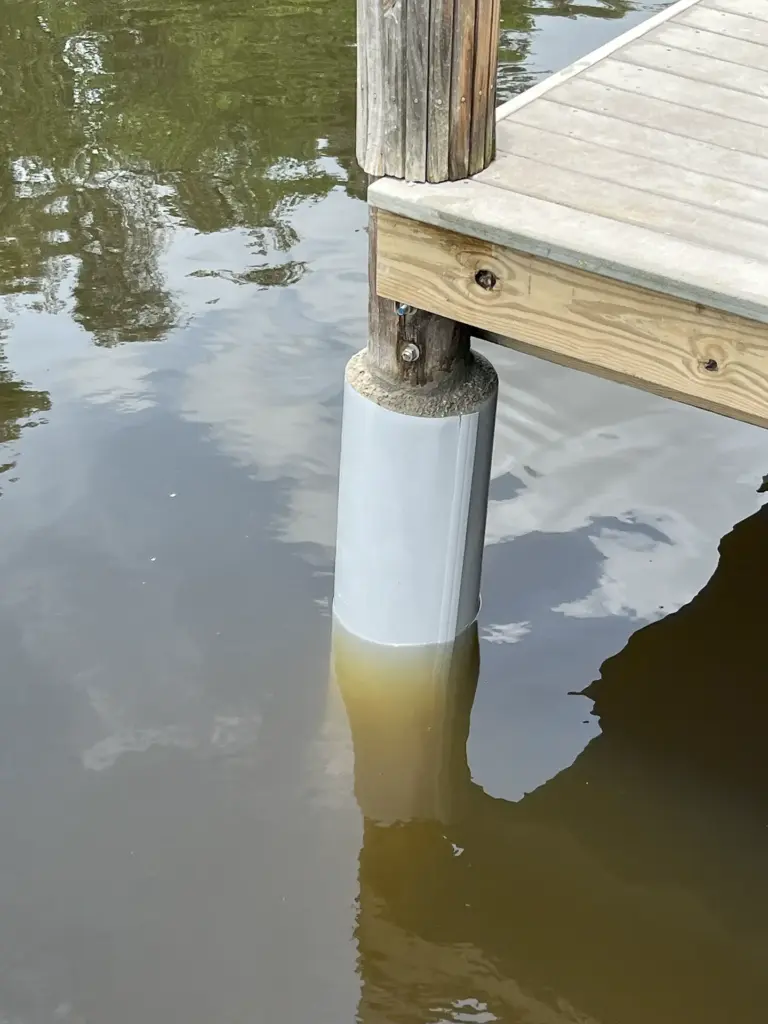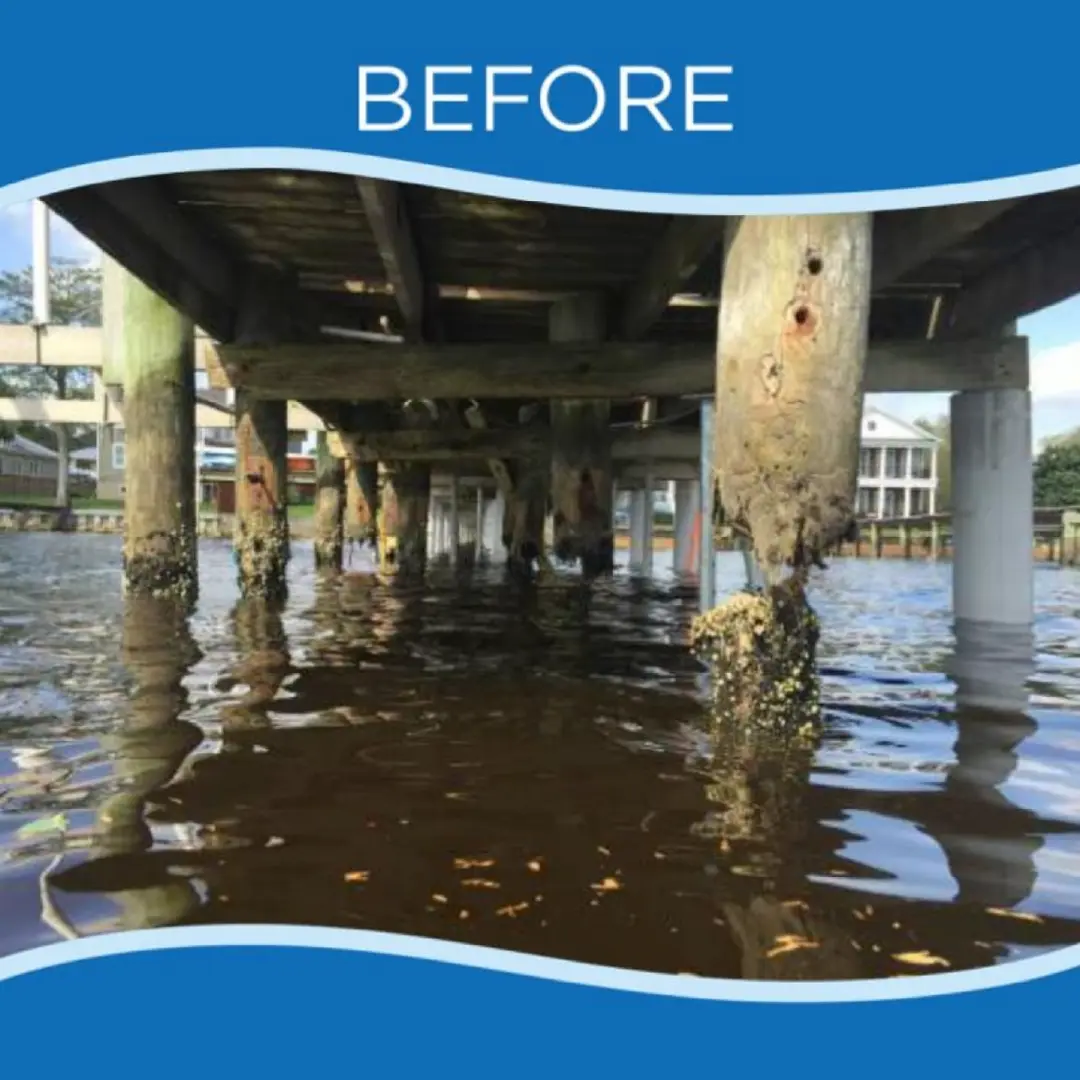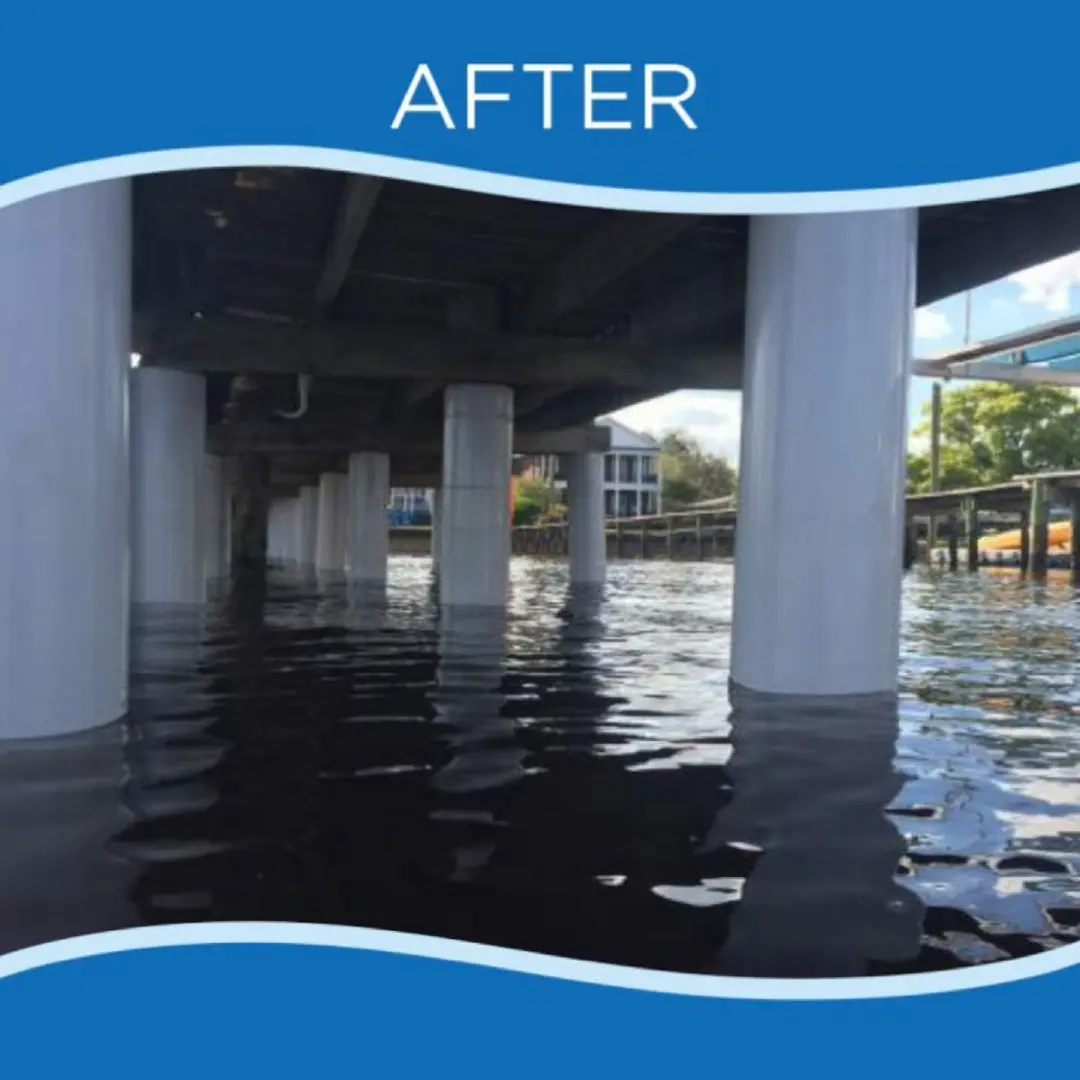Pilings are the backbone of any waterfront structure. Over time, exposure to saltwater, sun, and marine organisms can weaken them, putting your property at risk. At Seawall Medic, we specialize in repairing and reinforcing pilings to extend their lifespan and keep your structure safe.

Wood pilings face unique challenges, from rot and corrosion to cracks and structural wear. Our piling repair services address:


Our owner Mike Brandt will perform every consultation personally and will perform a detailed inspection of your seawall and we will do the following:
Our methods are tailored for Florida’s harsh coastal conditions — protecting your investment for years to come.
You don’t have to guess. Let us inspect your seawall and tell you what’s happening with it.
Dock pilings (the vertical posts supporting your dock) should be inspected at least once a year under normal conditions. It’s wise to schedule a thorough inspection annually to check the condition of pilings, cross-braces, and hardware. In addition to routine yearly checks, you should also inspect the pilings after any major events – for example, after a hurricane, a severe storm, or if a heavy boat has hit the dock.
As for who should do it: you can perform basic visual inspections yourself (look for obvious damage above water), but it’s highly recommended to hire a professional marine contractor or certified diver periodically. Professionals can examine the submerged portions of the pilings, often obscured by marine growth, and they know the subtle signs of issues underwater. Divers can also check the “mudline” where pilings meet the seafloor – a common spot for hidden rot or washout.
You’ll want to look for both surface clues and structural clues of piling problems. Common signs of damage include:
Protecting pilings involves both preventative measures and regular upkeep:
By combining these approaches – physical barriers (wraps/caps), protective coatings, and routine cleaning – you greatly extend the life of your pilings and fend off the worst of the marine wear-and-tear.
The lifespan of dock pilings varies depending on material and care. Timber pilings in saltwater might last 20–30 years if untreated, and up to 50 years or more if properly treated and maintained. Factors like the type of wood (pressure-treated pine vs. hardwood) and marine borer activity play a big role. In warm Florida waters, untreated wood can deteriorate quickly, but vigilant maintenance with wraps, caps, and inspections can extend their life significantly.
Piling wraps (also called sleeves) are protective coverings for timber pilings. A heavy-duty plastic or vinyl sheet is wrapped around the pile from just below the mudline to above the waterline, blocking marine borers and slowing rot.
For damaged pilings, there are repair jacket systems like SnapJacket®, which encase the deteriorated piling and are filled with concrete, essentially creating a reinforced shell around the original timber. These systems stop decay and restore strength without full replacement.
Whether you should consider them depends on your dock’s age and condition: wraps are excellent for prevention on new pilings, while jackets can rehabilitate older pilings at a fraction of replacement cost.